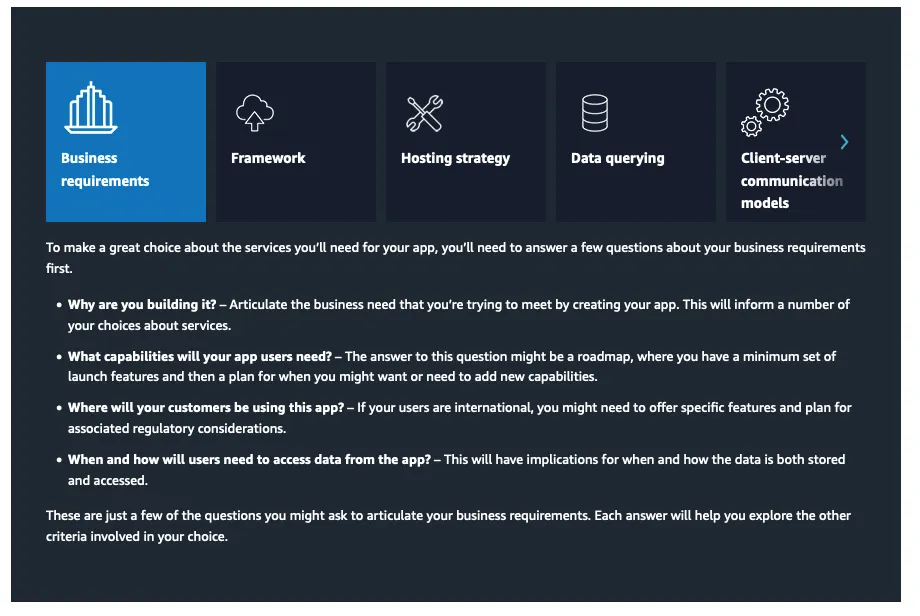Analysis Paralysis? Get unstuck with AWS Decision Guides
How to choose the right AWS buidling blocks? With 200+ services the right choice is not always obvious. AWS Decision Guides to the rescue!
Giuseppe Battista
Amazon Employee
Published Mar 19, 2024
Last Modified Apr 10, 2024
I have the privilege of working with hundreds of startups and founders every year. I admire founders because they have the courage of taking huge risks and work hard to bring their vision to life, despite all the hardships and curve balls the market throws at them. As a solutions architect for startups at AWS my mission is to help these talented and relentless individuals setting up strong foundations for their businesses.
One of the questions they ask more often is how to be sure they make the right decisions when architecting a brand new solution.
A blank canvas can be very intimidating. I stared at this very page for about 15 minutes before timidly typing my first character.
With this post, I want to share a resource I often default to when I am stuck with analysis paralysis.
AWS Decision Guides provide an overview of AWS services with guidance to help you choose the ones that fit your use case. Decision guides can also help you identify criteria that will inform your decision-making as you move along with the build out of your product.
While it's true that there's no compression algorithm for experience, these decision guides get pretty much close! Take the "Choosing AWS front-end web and mobile services" for instance. Each guide provides you with a solid decision-making framework based on simple steps.
This is an high level overview of the use-cases and technologies that are employed to bring your vision to life.
In the understand section, you'll find questions you should ask yourself to design your solution's lifecycle. These include what services to use, how to test your solution, how to get it in your customers' hands, how to monitor its correct functioning, how to get your users' feedback and engage with them.
In this section, the guide breaks down the steps that take you from business requirements to technical decisions. For example, based on the end user interaction, which client-server communications model should you use? What would be the best hosting strategy? What's the best development strategy? What aligns better with your target developer experience?

Now that you know the criteria by which you will be evaluating your options, the Choose section breaks down AWS services and capabilities according to your product lifecycle and provides you with alternatives and trade-offs.

At this stage, it should be a bit clearer what services you want to include in your solution. This section gives you pointers on how to get started with every service.

Exploring further resources like architecture diagrams, whitepapers, and AWS solutions that can enrich your understanding and application of AWS services, offering deeper insights and best practices for developing, scaling, and deploying your app.
As of today, the Decision Guides team has published 13 guides ranging from Analytics, to Machine Learning, Internet of Things (IoT), to Application Monitoring. Make sure you use these guides when stuck in analysis paralysis!
Giuseppe Battista is a Senior Solutions Architect at Amazon Web Services. He leads soultions architecture for Early Stage Startups in UK and Ireland. He hosts the Twitch Show "Let's Build a Startup" on twitch.tv/aws and he's head of Unicorn's Den accelerator.
Any opinions in this post are those of the individual author and may not reflect the opinions of AWS.
